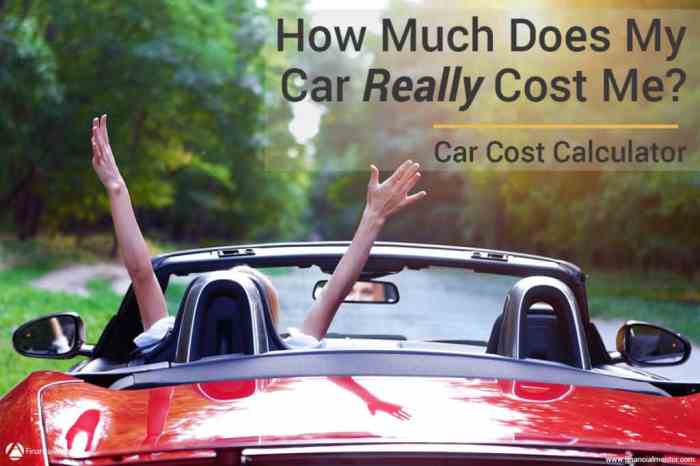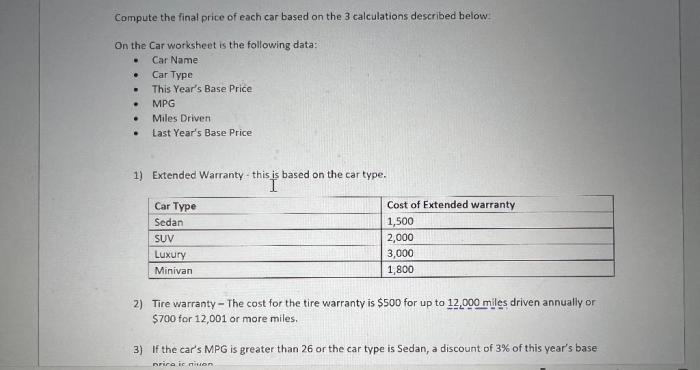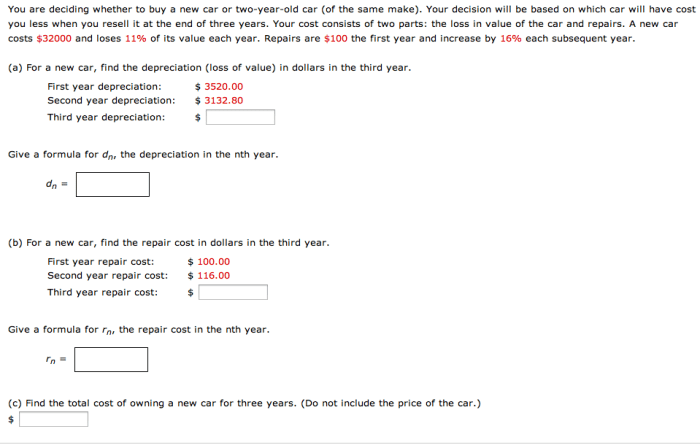How to Determine Invoice Price on a New Car
Understanding the Manufacturer’s Suggested Retail Price (MSRP)
How to determine invoice price on a new car – The Manufacturer’s Suggested Retail Price (MSRP) is the price a manufacturer recommends a dealer sell a new car for. It’s a starting point, not a fixed price. Several factors influence the MSRP, and understanding these is crucial to negotiating a fair deal.
Factors Influencing MSRP
Various factors contribute to a vehicle’s MSRP. These include manufacturing costs (materials, labor, assembly), features and options (e.g., sunroof, leather seats, advanced safety systems), market positioning (luxury vs. economy), and projected demand.
MSRP Components
The MSRP doesn’t directly reveal the manufacturer’s cost. It encompasses manufacturing costs, marketing expenses, research and development, and the manufacturer’s desired profit margin. Dealers then add their own markup to the MSRP.
MSRP vs. Invoice Price
The MSRP is the suggested retail price; the invoice price is what the dealer pays the manufacturer. The difference between the two is the dealer’s potential profit margin, which is often negotiable.
MSRP and Invoice Price Comparison
| Model | MSRP | Invoice Price | Difference |
|---|---|---|---|
| Toyota Camry | $26,000 | $23,500 | $2,500 |
| Honda Civic | $22,000 | $20,000 | $2,000 |
| Ford F-150 | $35,000 | $31,500 | $3,500 |
| Tesla Model 3 | $40,000 | $37,000 | $3,000 |
Dealer Invoice Price: Understanding the Details
The dealer’s invoice price isn’t simply the price the dealer pays the manufacturer. It includes various components that can impact the final price you pay.
Components of Dealer Invoice Price
The dealer invoice includes the base price from the manufacturer, holdback (a percentage of the MSRP retained by the manufacturer as an incentive for the dealer), freight charges (shipping costs), and any regional incentives or rebates.
Hidden Costs in the Invoice
While the invoice might seem transparent, hidden costs like advertising fees, administrative charges, and dealer preparation fees can significantly inflate the final price. These costs are often negotiable.
Regional Variations in Invoice Prices

Source: financialmentor.com
Invoice prices can vary based on location due to regional demand, competition, and manufacturer incentives. Dealerships in high-demand areas might have higher invoice prices than those in less populated regions.
Comparing Invoice Prices Across Dealerships
Comparing invoice prices from different dealerships for the same car model is essential for securing the best deal. This requires research and potentially contacting multiple dealerships to request their pricing information.
Negotiation Strategies: Securing the Best Deal
Negotiating the price of a new car requires preparation and a strategic approach. Understanding the invoice price gives you a strong negotiating position.
Effective Negotiation Tactics
Effective tactics include presenting competing offers from other dealerships, emphasizing your research on invoice prices, and negotiating individual items (e.g., accessories, extended warranty) separately.
Step-by-Step Negotiation Guide, How to determine invoice price on a new car
- Research invoice prices and MSRP for your desired car model.
- Visit multiple dealerships and obtain quotes.
- Present your research and competing offers.
- Negotiate the price, focusing on the invoice price as a benchmark.
- Finalize the deal, including financing and other terms.
Questions to Ask the Dealer
- What is your actual invoice price for this vehicle?
- What fees are included beyond the invoice price?
- Are there any available incentives or rebates?
- What is your best possible out-the-door price?
Leveraging Competing Offers
Presenting competing offers from other dealerships strengthens your negotiating position. This demonstrates your commitment to finding the best deal and motivates the dealer to be more competitive.
Factors Affecting Invoice Price Beyond the MSRP
Several factors beyond the MSRP influence the final invoice price and the overall cost of the vehicle.
Additional Fees
Destination charges (shipping costs), taxes, government fees, and dealer preparation fees are common additional costs that inflate the final price. These fees are typically non-negotiable but should be transparently disclosed.
Market Demand and Supply

Source: cheggcdn.com
High demand and low supply can increase invoice prices, as dealers may be willing to pay more to secure popular models. Conversely, low demand and high supply can lead to lower invoice prices.
Incentives and Rebates
Manufacturers frequently offer incentives and rebates to stimulate sales. These can significantly reduce the invoice price, benefiting both the dealer and the buyer.
Financing Options
Financing options, such as interest rates and loan terms, impact the overall cost of the vehicle. Securing a favorable financing arrangement can offset a slightly higher purchase price.
Resources for Finding Invoice Prices
Several online resources provide estimates of invoice prices, but it’s crucial to use them cautiously.
Reliable Online Resources
Websites specializing in automotive pricing often provide invoice price estimates. However, the accuracy can vary depending on the source and the specific vehicle.
Limitations of Online Resources
Online resources provide estimates, not exact figures. Actual invoice prices can vary between dealerships due to regional factors and dealer-specific negotiations with the manufacturer.
Verifying Online Information
Always verify online invoice price information by contacting multiple dealerships and requesting quotes. Compare the online estimates with the actual quotes to assess accuracy.
Potential Pitfalls

Source: cloudfront.net
- Outdated information.
- Inaccurate data entry.
- Regional variations not reflected.
- Hidden fees not included.
Visual Representation of Price Breakdown: How To Determine Invoice Price On A New Car
A clear visual representation helps understand the final price breakdown.
Bar Chart
A bar chart could illustrate the proportion of different cost components (MSRP, dealer markup, destination charges, taxes, fees) in the final price. Each bar would represent a cost component, and its height would reflect its contribution to the total price. For example, a tall bar for MSRP, a shorter bar for dealer markup, and smaller bars for other fees.
Pie Chart
A pie chart would visually represent the percentage contribution of each cost component to the final price. Each slice of the pie would represent a cost component, with the size of the slice proportional to its percentage of the total price. This offers a clear overview of the relative weight of each cost.
Common Queries
Can I get the exact invoice price from a dealership?
Dealerships aren’t obligated to disclose their exact invoice price. However, you can use online resources to get estimates and use that information as a negotiation leverage.
What if the online invoice price estimates differ significantly?
Different websites use different methodologies and data. Compare multiple estimates and use them as a range rather than a precise figure.
Are there any legal protections regarding invoice prices?
There aren’t specific laws mandating invoice price disclosure. However, deceptive or misleading advertising practices related to pricing are illegal.
How important is my credit score in the final price?
Determining a new car’s invoice price involves researching dealer costs and considering additional fees. To get a sense of market value, you might check online resources focusing on specific models, like looking at the pricing for a honda crv new car price malaysia to understand regional variations. Ultimately, negotiating the final price requires comparing this information with the dealer’s offered price and factoring in any applicable incentives.
Your credit score impacts your financing options and interest rates, which indirectly affect the overall cost. A higher credit score typically results in lower interest rates.





















